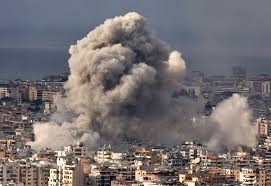
Israel Hezbollah war ceasefire: The Israeli army launched Operation 'Northern Arrow' in Lebanon on October 1. This operation was based on limited targets, in which Hezbollah's bases were targeted. After about 2 months, US President Joe Biden has proposed a ceasefire, to which both Israel and Hezbollah have agreed. According to Israeli media, the ceasefire agreement has been prepared on Monday (November 25). After this, it can be approved in the Israeli National Security Cabinet meeting to be held today (November 26). However, the Israeli army tried to destroy all the major bases of Hezbollah before the ceasefire.
Earlier, continuous air strikes by the Israeli Air Force destroyed Hezbollah's weapons depots and other important bases. The Israeli Defense Force (IDF) used its technical capabilities in this operation, in which pager attacks targeted more than 3,000 Hezbollah terrorists. This technique made Israel's strategy an example of future military technology.
Hezbollah's response
Since ceasefire talks began, Hezbollah has reduced the intensity of rocket attacks on Israel. On Monday, only double-digit rockets were fired, which was seen as a sign of progress towards a peace agreement.
What is a ceasefire?
Ceasefire, which is called war in Hindi, is a temporary or permanent agreement to stop armed conflicts. It takes place between two or more parties who are involved in war or military conflict.
Main objectives of ceasefire:
Providing humanitarian relief: To provide relief and rescue to the civilians trapped in the conflict zone.
Opening the way for dialogue: To discuss the possibilities of peace agreements.
Balancing international pressure: To stop the conflict under pressure from the United Nations and other powers.
Read More: YouTube bans reality show Love Island in Pakistan after controversy erupts
--Advertisement--

 Share
Share



